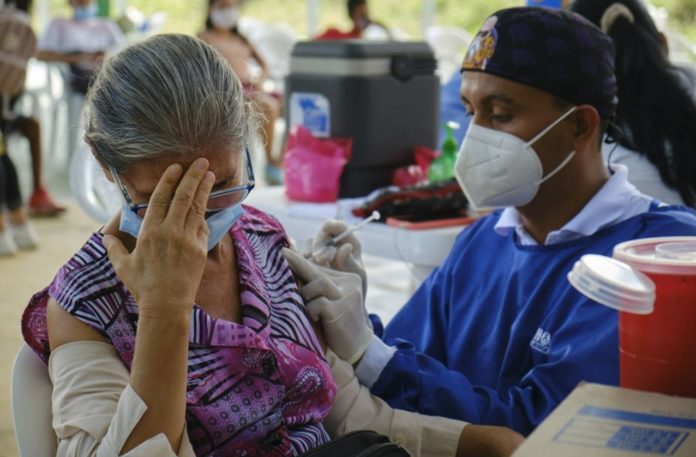A new study carried out by the UK’s researchers assessed people recruited in the ‘Virus Watch’ community cohort who had received their second shot of either AstraZeneca/Oxford vaccine (ChAdOx1) or BioNTech/Pfizer vaccine (BNT162b2).
How do vaccines types, demographics, and clinical variables influence antibody waning?
In the current study, anti-S levels were compared between ChAdOx1 and BNT162b2 vaccine recipients by time since vaccination, age, sex, and clinical vulnerability. A total of 24,049 samples from 8,858 individuals, 5,549 of whom received a second dose of ChAdOx1 and 3,205 received BNT162b2 vaccines, who remained anti-nucleocapsid (anti-N) antibody negative, were included in the analysis of anti-S waning over time.
Anti-S levels peaked following the second dose of vaccine and were nine-fold higher for BNT162b2 as compared to ChAdOx1. Later, waning anti-S levels followed a log-linear decline from three weeks after the second dose of vaccination.
At 20 weeks after the second dose of the vaccine, mean anti-S levels were 1521 U/ml for BNT162b2 and 342U/ml for ChadOx1 recipients. However, the overall rates of waning were higher in BNT162b2 recipients as compared to those who had received the ChAdOx1 vaccine.
There was no evidence of a difference in the rates of waning by age, sex, or clinical risk groups for BNT162b2 or ChAdOx1 vaccines.
Anti-S level correlates with SARS-Cov-2 protection
In total, data from 8,275 individuals were analyzed for anti-S levels prior to breakthrough infection to examine anti-S as a correlate of protection against SARS-Cov-2 infection. Furthermore, these samples were also used to estimate a predicted time to reach a specified anti-S level for a threshold of protection. The team undertook survival analysis using a Kaplan-Meier descriptive analysis, in addition to a Cox regression model.
During the timeline for this particular study, the team observed 197 breakthrough infection cases. Further, they found that individuals with anti-S levels less than 500 U/ml following the second dose were nearly twice as likely to experience a breakthrough infection compared to those with higher levels.
Mean antibody levels declined to the threshold of 500 U/ml after about 3 months for ChAdOx1 and after about 7 months for BNT162b2. Thus, humoral protection wanes to levels associated with breakthrough infections before a 6-month period for those vaccinated with ChAdOx1 but not for BNT162b2.
How does vaccine type affect risk of re-infection?
The current analysis included 14,340 participants who reported at least one test result in more than 14 days past the date of receiving their second vaccine dose or by the end of study follow-up.
The team found an increased risk of breakthrough infections for those who received the ChAdOx1 vaccine as compared to those who received the BNT162b2 vaccine. People vaccinated with ChAdOx1 had 1.43 increased odds of a breakthrough infection as compared to those doubly vaccinated with BNT162b2.
From 20 weeks onwards, the risk of breakthrough infection for BNT162b2 vaccinated individuals is approximately half of ChAdOx1. Furthermore, anti-S levels may provide an indication of the underlying correlates for this increased risk.
Nevertheless, circulating anti-S levels are unlikely to be the only immunological correlate of protection against COVID-19.Aas humoral immunity wanes, T-cell mediated immunity might act as the source of continued stable protection against infection and severe disease.
Noticeably, the timing of SARS-CoV-2 infections included in the current study coincided with the period when the Delta SARS-CoV-2 variant was the main circulating strain in England and Wales. Therefore, the team highlights that these findings may relate to many countries currently experiencing an increase in breakthrough infections due to Delta and where the populations have received ChAdOx1 or BNT162b2 vaccines.
The study concluded that “Together, these findings suggest that boosting ChAdOx1 earlier than six months after the second dose may be advantageous, particularly in those at greatest risk of severe outcomes.”
Image Credit: Getty
You were reading: Breakthrough infection risk after second dose: AstraZeneca vs. Pfizer vaccine
